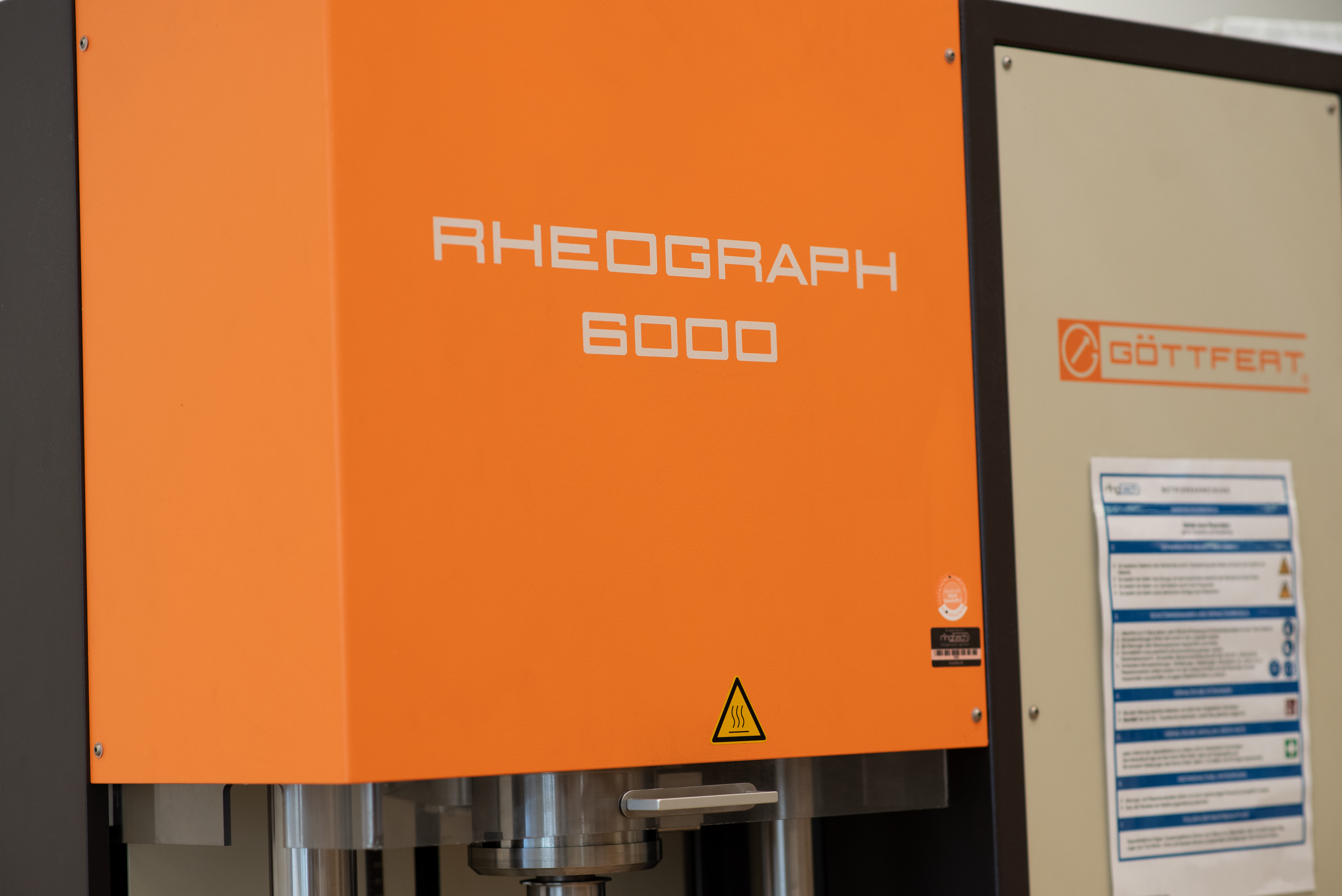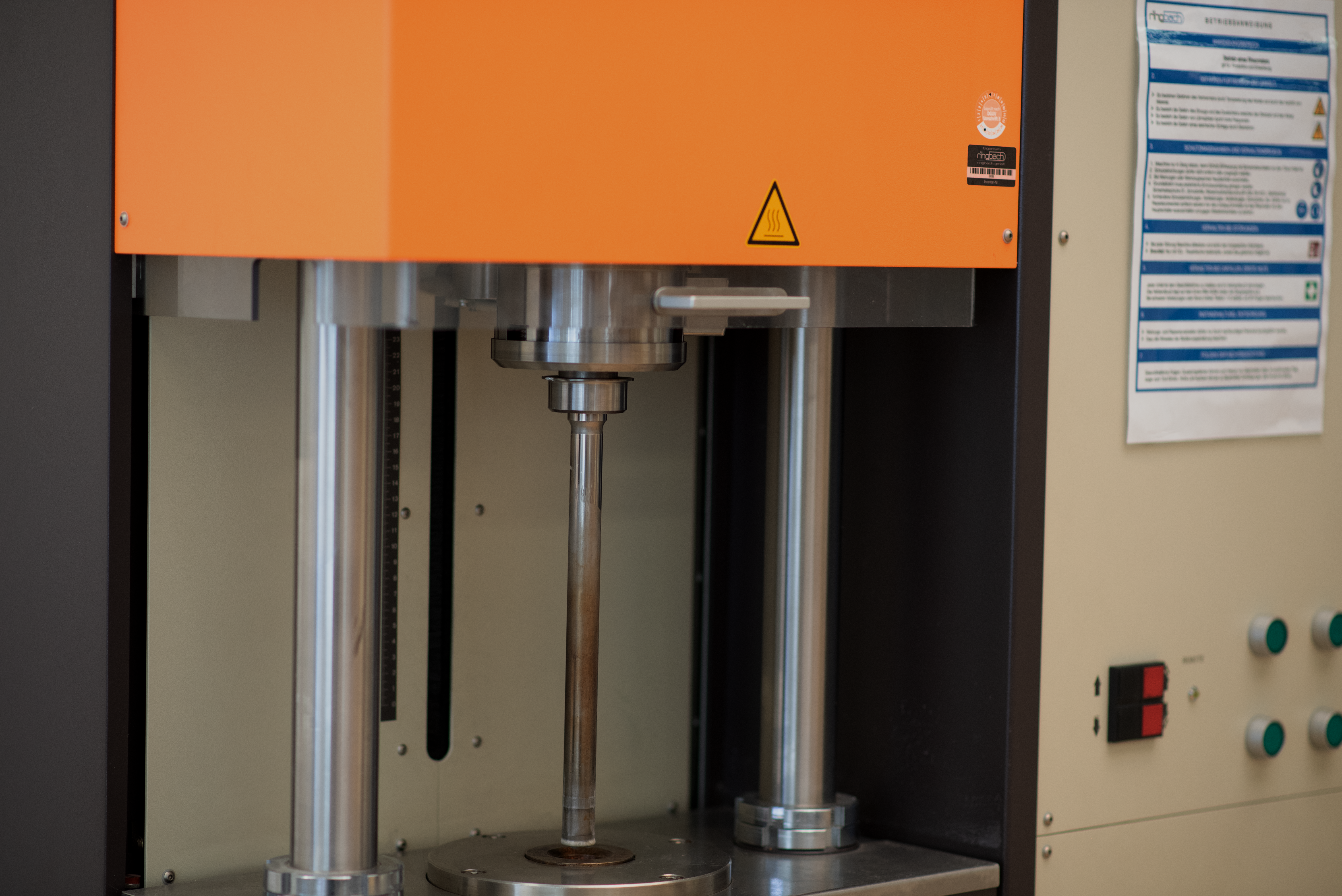
Rheology, rheometer, and rheological investigations.
- No Comments





As an essential field of engineering and materials science, rheology holds significant importance. It generally deals with the flow behavior of materials. From materials science to medicine and food processing, rheology finds applications in various domains.
At ringbach, as experts in this field, we naturally possess a rheometer for the precise measurement of rheological properties of various substances. Therefore, our services include exclusive material testing of your substances using the Rheograph 6000 from the world-leading manufacturer Göttfert.
→ non-binding inquiry ←
What is Rheology?
The term “rheology” is derived from the Greek words “rheo” (to flow) and “logos” (science). Consequently, rheology means “the science of flow.” In essence, rheology deals with how materials respond to external forces and how they behave under stress. These results are of great importance in optimizing manufacturing processes, problem-solving, and overall product production. Rheological properties can manifest in various materials, including liquids, gels, solids, and gases. Measurements become particularly relevant in complex fluids, non-Newtonian fluids, and viscoelastic materials where flow behavior does not vary linearly with applied stress or shear rate.
Rheological Parameters and Their Significance
Rheology explores a variety of parameters and concepts, with some of the most important being:
Viscosity:
It describes a material’s resistance to flow. A material with high viscosity flows slowly, while one with low viscosity flows more easily. This is particularly relevant in fields like food processing and medicine.Elasticity:
This describes a material’s ability to return to its original shape after the removal of a load. Elastic materials typically return to their original form, while viscous materials may maintain their shape or slowly return to their initial state. It is relevant in fields like medicine and biomechanics.Shear Strength:
This term refers to the force needed to deform or shear a material. High shear strength implies high resistance to deformation, while low shear strength indicates easy deformability. It is relevant in fields like construction and aerospace.
What is a Rheometer?
A rheometer is a highly specialized instrument used in rheology to characterize and quantify the flow behavior of specific materials. Essentially, a rheometer functions by applying controlled forces or deformations to a material, then measuring and recording the material’s response to these forces. This provides results regarding viscosity, elasticity, shear strength, and other rheological properties.
Some key features and functions of rheometers include:
Various Measurement Modes:
Rheometers can operate in different measurement modes, including rotational mode (rotational rheometer), shear mode (shear rheometer), and capillary mode (capillary rheometer).Controlled Conditions:
Rheometers allow precise control of temperature, pressure, and shear rate to simulate and vary conditions relevant to specific applications.Application in Various Industries:
Rheometers are used in a wide range of industries, including the food industry, pharmaceuticals, cosmetics, materials science, petrochemistry, biology, and more.Material Characterization:
Rheometers analyze materials for their rheological properties. For example, viscosity of a liquid can be measured as a function of temperature to understand its flow behavior.Quality Control and Product Development:
Rheometers are frequently used in quality control to ensure products exhibit the desired rheological properties. They are also essential tools in developing new products and materials.Research and Development:
In academic research and laboratory settings, rheometers play a crucial role in studying the rheological properties of substances to deepen our understanding of materials science and fluid dynamics.
Types of Rheometers
There are various types of rheometers available to cater to different requirements and applications.
Here are some examples:
Rotational Rheometer:
Widely used for characterizing liquids and viscoelastic materials. It immerses a rotating spindle or plate into the material to measure the resulting response.Capillary Rheometer:
Used to analyze the flow behavior of polymers and melts in narrow capillaries or thin tubes. It measures the flow rate of the material through the capillary at different pressures and temperatures.Shear Rheometer:
Mainly used for characterizing solids and semi-solid materials. It generates shear stress by applying a plate or blade to the material and measures the shear force.Oscillatory Rheometer:
Specialized devices used to measure viscoelastic properties at very small deformations. They are suitable for characterizing polymers and gels.Dynamic Rheometer:
Versatile instruments that offer both shear and elongation modes. They are frequently used in material development and characterization to analyze both linear and nonlinear rheological properties.Contraction Rheometer:
Contraction rheometers measure the contraction of a material during mixing and are used in the food industry to analyze the deformability and behavior of dough and other viscoelastic substances.Ball Rheometer:
These rheometers use a ball floating or rolling in a sample to determine the viscosity and rheological properties of liquids.
The choice of the right rheometer depends on the materials to be measured, measurement requirements, and scientific objectives. Each type of rheometer offers unique advantages and enables the characterization of substances across a wide range of rheological properties, which is crucial in various industries and applications.
How Does a Rheometer Work?
A rheometer is a complex scientific measurement instrument. To understand how it works, let’s consider the basic steps and mechanisms:
Sample Preparation:
First, a sample of the material to be analyzed is prepared and carefully brought to the desired temperature to ensure consistent results.Sample Holder:
The sample is placed in a sample holder or cell. Depending on the type of rheometer and the sample, the sample holder may have various shapes and configurations.Application of Stress:
Here, the rheometer applies controlled stresses to the sample to measure its response to shear forces. This is done differently depending on the type of rheometer:
- Rotational Rheometer:
A rotating element, such as a spindle or plate, is immersed in the sample. The rotation generates shear stress, and the resulting torque measurement allows for the determination of shear strength and viscosity. - Shear Rheometer:
A plate or blade is applied to the sample’s surface to generate shear stress. The deformation of the sample and the applied shear force are measured. - Capillary Rheometer:
The sample is forced through a narrow capillary or thin tube, with pressure and flow rate measurements used to analyze viscosity and flow behavior.
Data Acquisition and Analysis:
During stress application and deformation, data is collected, including shear forces, torques, and sample deformations. This data is recorded in real-time and presented in graphs and curves.Variation of Conditions:
Rheometers offer the flexibility to vary experimental conditions, including temperature, shear rate, and pressure, to investigate the material’s behavior under different environments.Interpretation of Results:
Based on the collected data and rheological models, scientists and engineers can analyze the material’s properties, including viscosity, shear strength, elasticity, and other rheological parameters.
Applications of Rheology
Rheology finds applications in a wide range of industries and fields. These applications span from product development and quality control to optimizing manufacturing processes and solving technical challenges. Here are some key applications of rheology:
- Food Industry:
E.g. Consistency of sauces, dough, creams, and beverages. - Pharmaceuticals:
E.g. Viscosity of medicines, ointments, and suspensions. - Cosmetics Industry:
E.g. Formulation of creams, lotions, and makeup. - Materials Science:
E.g. Characterization of polymers, composites, and other materials. - Construction and Building Materials:
E.g. Measuring the strength, durability, and workability of construction materials. - Medicine and Biology:
E.g. Analyzing blood, tissues, and fluids. - Oil and Gas Industry:
E.g. Optimization of drilling processes. - & many more.
Rheology in Plastic Processing
In plastic processing, rheology plays a crucial role. It deals with the complex flow phenomena that occur in extruders and assists in designing screw geometries. Additionally, it describes the flow and mixing processes in shear and mixing components. Another important aspect is balancing the melt in distribution systems, such as slit dies or pinole distribution systems using hanger or fish tail distributors. The primary goal is to evenly distribute the melt flow so that it exits at the outlet with a uniform velocity. This is achieved by balancing the pressure drop along all flow paths.
(Source: Rheologie der Kunststoffe – Theorie und Praxis, Thomas Schröder, 2nd updated and expanded edition, Hanser Verlag)
Rheometers at ringbach
As mentioned earlier, our services include rheological testing of your materials. Our rheometer, the Göttfert Rheograph 6000, is a high-pressure capillary rheometer. Using this device, molten plastic is forced through a thin capillary at high pressure. The pressure drop occurring before the capillary reaches atmospheric pressure at its end is measured, along with the volumetric flow rate inside the capillary. From this data, rheological characteristics are determined and presented in clear diagrams, enabling fast and precise measurement results.
Conclusion
In conclusion, rheology is an incredibly interesting and important field of material research. It plays a pivotal role in today’s scientific standards and is indispensable for various scientific and industrial applications. Without rheological investigations, understanding biological fluids such as blood and tissues or optimizing manufacturing processes would be significantly more challenging. Even the precise dosing of medications would be less efficient. Therefore, rheology stands as an integral part of materials research, shaping scientific progress and enabling innovative solutions to contemporary challenges. It continues to be a key area of research and development, contributing to finding innovative solutions for the challenges of our time.
Sources:
Rheologie der Kunststoffe – Theorie und Praxis, Thomas Schröder, 2., aktualisierte und erweiterte Auflage, Hanser Verlag


